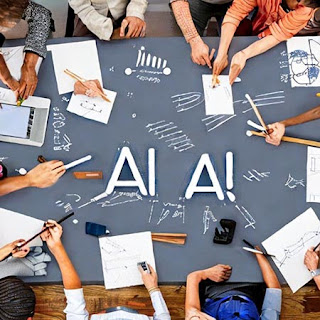" The Best Way To Predict The Future Is To Invent It " - Alan Kay: Xerox PARC Labs. And, the only issue: how far into the future can you go vs. what changes on the trip back to the present.
Often in the race to create a usable and yet unclear future, and for those who practice innovation as a way to create a firm's/military's/government's/lab's effectiveness for end users that such organizations serve, the factor of how far afield investigations/campaigns/interactions/experimentation can go & how hard the process is of retrofitting what has been born out of such efforts, to present day is the reality that is often faced. The value of creating future incrementalism is in fact, in the sustainability of connecting what already is, and to what will be, via advanced design. After all, for the most part, programs written even in the earliest days of Microsoft DOS can still be run on brand new and incredibly advanced present day PC operating systems. It's designed that way.
With conversations surrounding the idea that, design matters, but customers can't be invented who don’t exist, in Why Corporate America Broke Up With Design, the reality is that this idea has sometimes been the bane of design in it's most raw R&D focused effort: what will be, comes from the impossible with just one or two end users after the inventive process is completed. Thus the statement that design matters, but... is not a truism. What has not even been conceived is sometimes the realm of invention, and yet, design, the more specific form of imagining and articulating, often comes far before the science or aesthetics of a specific focus is even understood. By 2022, this machination of design has become a de facto reality in boardrooms, organizational meetings and any and all manner of discussions on how more fully usable efforts bring value to all involved.
In the detailed How Integrating Design Impacts Company Performance and the ever well quoted McKinsey Business Value Of Design plus their Redesigning The Design Department work, it's very clear to see that the consistent effort and realization is that while the performance factors of design lead organizations, of design centric firms and deign lead government and military organizations brings significant value to all involved, the nature of such efforts that an articulated X, is the driving factor of a future of exactly what will be and what will be built. This future to be built is how bridges, designed, architected and constructed, a future ( from advanced R&D years in the future ) is often quite perfect and then being delivered shows the best possible outcomes even when customers ( that do evolve and use such artifacts ) are a " need " un-articulated to begin with. After all, a powerful design effort, the Eames Lounge Chair and Ottoman by Herman Miller began from a military contract to build lightweight transportable structures and The Ghost Chair by Kartell never had customers in the beginning, just a new machine perfected and capable of producing large injection molded plastics objects. Customers ( undefined ) needed to use it ( the machines ) but not the legendary design icons born from it. Now there are both: customers and innovations born from the void of a future defined by design.
###
#iGNITIATE #Design #DesignThinking #DesignInnovation #IndustrialDesign #iGNITEconvergence
#iGNITEprogram #DesignLeadership #LawrenceLivermoreNationalLabs #NSF #USNavy
#EcoleDesPonts #Topiade #LouisVuitton #WorldRetailCongress #REUTPALA
#WorldRetailCongress #OM #Fujitsu #Sharing #Swarovski #321-Contact
#Bausch&Lomb #M.ONDE #SunStar









